Phyloxera on grapes is one of the most common diseases that can cause enormous damage to the vineyard. It is caused by insects - aphids. The pest affects almost all parts of the plant - leaves, roots, cuttings and antennae. However, properly selected control measures can cure the bush from this quarantine disease and avoid economic damage.
Content
Appearance with a leaf form of the disease
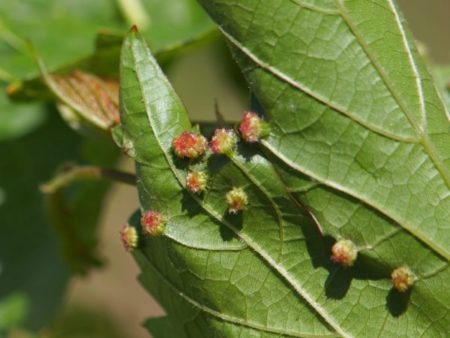 Leaf phylloxera is characterized by damage to the green part of the plant. The winged form of the insect causes it. Leaf aphid is a tiny insect that looks like an oval, up to 1 mm long, yellow-green in color. It is quite difficult to notice a single individual with the naked eye. But on the leaf of the plant, the pest gathers in groups and forms spherical formations that are easy to detect. If the number of aphids is large and there are not enough leaves for food, the aphid also affects the grape tendrils.
Leaf phylloxera is characterized by damage to the green part of the plant. The winged form of the insect causes it. Leaf aphid is a tiny insect that looks like an oval, up to 1 mm long, yellow-green in color. It is quite difficult to notice a single individual with the naked eye. But on the leaf of the plant, the pest gathers in groups and forms spherical formations that are easy to detect. If the number of aphids is large and there are not enough leaves for food, the aphid also affects the grape tendrils.
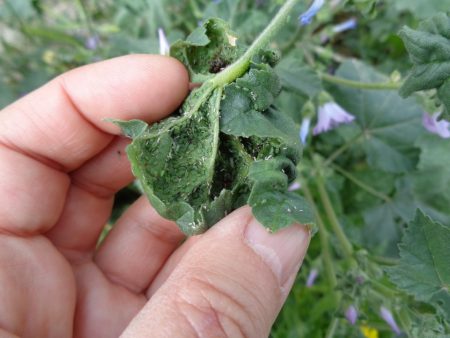
Ways to get rid of aphids on cherries
Tired of seeing instead of the abundant and beautiful flowering of cherries, leaf-lined aphids? Then it's time ...
It is proved that leaf phylloxera destroys mainly varieties of American origin. European cultures are distinguished by their sustainability. But the immunity of grapes to the disease is also affected by such factors: the age of the bush and the condition of the soil on which it grows. Parasitizes phylloxera in the warm season.
A feature of this type of disease is the fact that the younger the generation of aphids, the more young leaves it chooses to populate. Almost all young leaves suffer in this way, their petioles, antennae, and shoot ends deform. Finding a leaf type phylloxera is easy. It is enough to examine the leaf of grapes - tubercles and peculiar warts on it indicate the presence of a parasite (this is clearly visible in the photographs). There are several stages of infection:
- the tubercles are located only on the lower surface of the leaf - this is the primary infection;
- The formation of a spherical shape is also present on the upper side, then this is the re-population of larvae.
Distinctive features of the root form
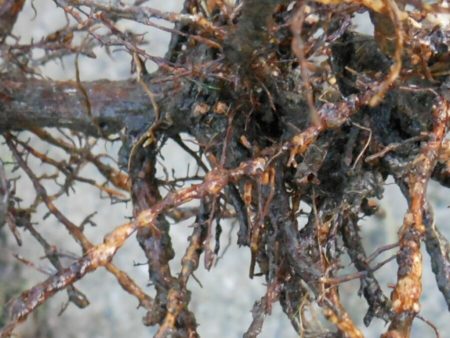
The wingless aphid of the root phylloxera 1 mm long is capable of laying about 150-180 eggs, of which larvae appear after 10 days. Up to 6 generations of insects form in one summer. Reproduction occurs until late autumn. Forming peculiar yellow warts on the roots, larvae and adult insects destroy the root system, suck out nutrients, and turn them into a sponge. The grape bush suffers from a nutrient deficiency, ceases to bear fruit and dies.
Where and when did the disease appear?
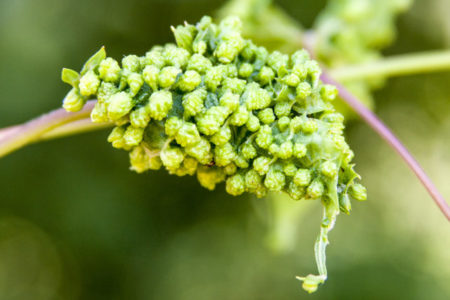 The homeland of phylloxera is considered to be the southeastern part of America. The pest was often found on wild bushes growing in the Mississippi River area. The first description of the mass infection of vineyards in Europe was noted in 1868, where the disease was introduced along with plants. In 1880, the first infection of vineyards on the Crimean peninsula was revealed. It is assumed that the pest was brought to Crimea along with grape seedlings from France, where up to 90% of the vineyards were destroyed by this small pest. According to literature data, in the 19th century, phylloxera in Europe destroyed up to 6 million hectares of vineyards.
The homeland of phylloxera is considered to be the southeastern part of America. The pest was often found on wild bushes growing in the Mississippi River area. The first description of the mass infection of vineyards in Europe was noted in 1868, where the disease was introduced along with plants. In 1880, the first infection of vineyards on the Crimean peninsula was revealed. It is assumed that the pest was brought to Crimea along with grape seedlings from France, where up to 90% of the vineyards were destroyed by this small pest. According to literature data, in the 19th century, phylloxera in Europe destroyed up to 6 million hectares of vineyards.
Life Cycle of Root Phylloxera
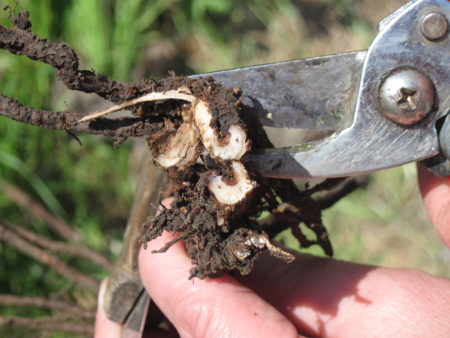 Root phylloxera is represented by three forms - underground, terrestrial and winged. The wingless forms of green-yellow color, small in size up to 1 mm, inhabit the roots of old vine bushes and winter there. In September, nymphs can be found among the root aphids - thin individuals of an orange color with the beginnings of wings. Such aphids actively develop in moist and warm soil. The pest creeps to the surface, and after the 4th molt takes on a winged shape with elongated tentacles and well-developed eyes.
Root phylloxera is represented by three forms - underground, terrestrial and winged. The wingless forms of green-yellow color, small in size up to 1 mm, inhabit the roots of old vine bushes and winter there. In September, nymphs can be found among the root aphids - thin individuals of an orange color with the beginnings of wings. Such aphids actively develop in moist and warm soil. The pest creeps to the surface, and after the 4th molt takes on a winged shape with elongated tentacles and well-developed eyes.
Thanks to the wings, the insect is able to make short flights, lay on the kidneys of grapes, the wrong side of the leaf and the porous bark of the egg. Males grow out of tiny larvae. Life expectancy 10 days. Since there is no proboscis, they can not eat. After a single sexual intercourse, a female sneaks through the cracks of the old bark and lays a fertilized egg there.
Life Cycle of Leaf Phylloxera
In spring, wingless female aphids hatch from winter eggs. They populate 1-6 grape leaves. With the change of generations, and there are up to 6 under favorable weather conditions, aphids rise higher and higher along the green part of the plant. Where she pierced a vine leaf with her proboscis, a gall of green color with a concave shape is formed. The grape leaf loses its nutrients and dries. When insect food ceases to be enough, they move to a nearby bush.
Phylloxera Distribution
The spread of phylloxera disease is favored by the fact that aphids actively move itself. The winged form of the insect is able to overcome up to 100 m per day. Passive distribution is facilitated by rain and mud flows, melt water.
Another way to passively spread the disease is to not follow sanitation rules. Sometimes a winegrower uses dirty tools that have not been processed to work. Visiting an infected vineyard leads to phylloxera larvae being transferred to clothing and shoes. In addition, the purchase of seedlings in unverified nurseries infected with pests threatens to infect the entire vineyard.
What is dangerous phylloxera
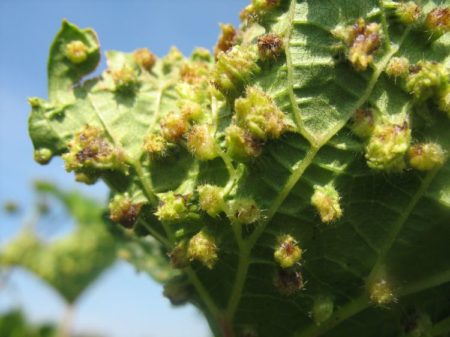 Both types of pests have a complex life cycle and similar traits in their diet. Damaging the roots of the plant with its proboscis, the insect sucks out nutrients from it, poisoning the plant with the products of its vital activity. The root becomes rotten, porous. The leaf form according to a similar principle of nutrition causes damage to the leaves, the formation of warts and tumors on them. The grape bush ceases to grow and develop, and eventually dries. The shoots of a weakened grape bush do not have time to ripen, often they do not tolerate frost.
Both types of pests have a complex life cycle and similar traits in their diet. Damaging the roots of the plant with its proboscis, the insect sucks out nutrients from it, poisoning the plant with the products of its vital activity. The root becomes rotten, porous. The leaf form according to a similar principle of nutrition causes damage to the leaves, the formation of warts and tumors on them. The grape bush ceases to grow and develop, and eventually dries. The shoots of a weakened grape bush do not have time to ripen, often they do not tolerate frost.
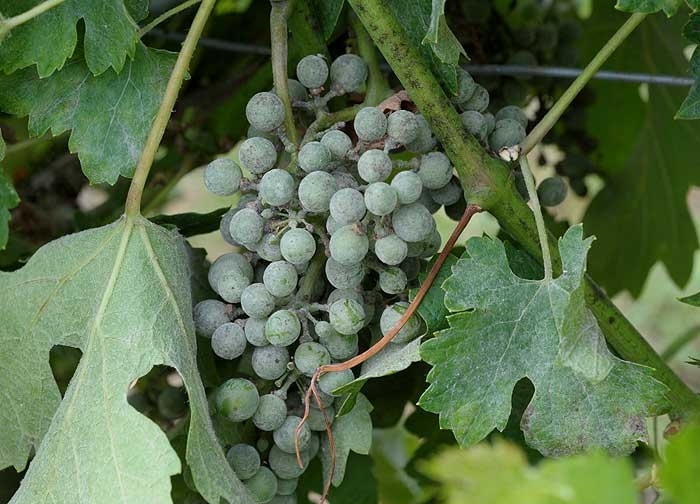
How to deal with white plaque on grape leaves: causes, treatment
The appearance of white or gray plaque on grapes indicates damage to the plant by a fungal infection. Similar ...
Phylloxera Treatment
Unfortunately, a means of guaranteeing 100% disposal of phylloxera grapes does not exist. If the root form of the parasite is detected, the entire vineyard is destroyed with the ban on planting grapes in this area for 15 years. When a leaf form of the parasite is detected, chemical agents are used.
Folk methods of dealing with phylloxera
If a parasite is found, it is necessary to quickly eliminate it. However, not all gardeners know how to fight without using chemicals. People's advice will come to the rescue:
- A small focus phylloxera try to wash off a large pressure of water, after which insects become prey for birds. Repeat the manipulation several times.
- Spraying vineyard a solution of ash - 1 glass of ash is diluted in 5 l of water, insist 12 hours.
- A good remedy is a solution of tar soap - 100 g per 10 liters of water.
- Between grape bushes, it is recommended to plant parsley - a fragrant plant repels leaf aphids, which have an excellent sense of smell.
- Spraying plants with infusion of tobacco leaves - 1 cup of leaves in 5 liters of water. The finished solution must be allowed to infuse for 12 hours, then strain.
Chemical treatment
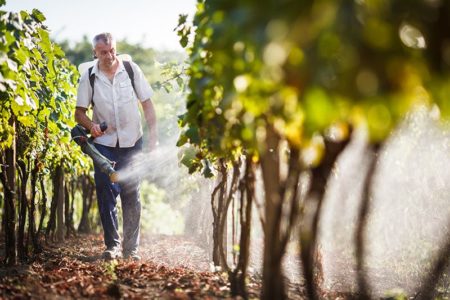 The correct and timely fight against phylloxera is the key to a rich harvest. One way to combat this is to use chemicals from the chemical industry. Insecticide treatment and fungicides are needed 3 times during the growing season: before the appearance of foliage, before flowering and after the formation of ovaries. They recommend preparations that are not washed off by precipitation and are safe for honey bees and humans. These drugs include:
The correct and timely fight against phylloxera is the key to a rich harvest. One way to combat this is to use chemicals from the chemical industry. Insecticide treatment and fungicides are needed 3 times during the growing season: before the appearance of foliage, before flowering and after the formation of ovaries. They recommend preparations that are not washed off by precipitation and are safe for honey bees and humans. These drugs include:
- "Fozalon" - kills aphids at all stages of development, is active even at low temperatures; "Karbofos";
- "Actellik" - does not allow the re-emergence of insects;
- "Fastak" - fights insects at all stages of development, is compatible with other fungicidal and insecticidal drugs;
- Kinmix;
- "Condor" is dangerous for sucking insects at all stages of development.
With a large spread of the lesion of aphids for treatment it is possible to use carbon disulfide that penetrates deep into the soil. Keep in mind that this compound is volatile, flammable and should be used with caution.
Prevention
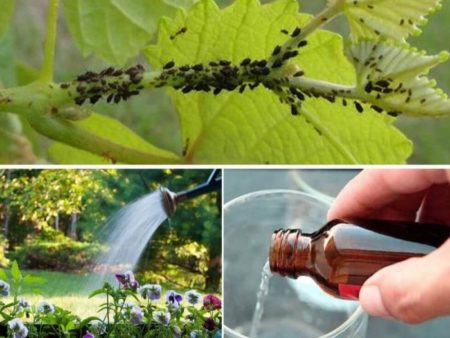 “Any disease is easier to prevent than to cure” - the assertion of Hippocrates should be considered fundamental in the prevention of infection with phylloxera. For the prevention of the disease, the following actions are recommended:
“Any disease is easier to prevent than to cure” - the assertion of Hippocrates should be considered fundamental in the prevention of infection with phylloxera. For the prevention of the disease, the following actions are recommended:
- seedlings for planting buy from trusted sellers, trying to avoid regions affected by phylloxera;
- before planting, disinfect the roots with a 24% emulsion of the gamma isomer of hexachlorocyclohexane;
- the topsoil is replaced with sand;
- plant varieties resistant to phylloxera;
- timely cut damaged surface roots;
- plant petioles deeply;
- sprinkle the root with a layer of sand in difficult soil during planting;
- uproot old grape bushes.
Choosing the best variety for your site
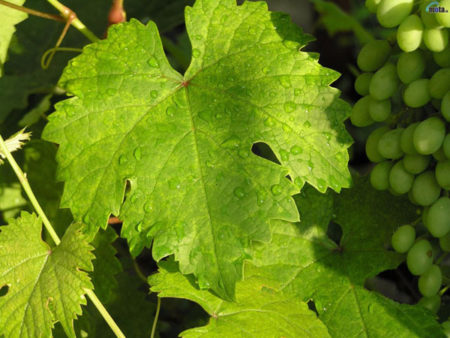 Experts recommend stopping your choice European grape varieties, since they are practically not affected by the root type of phylloxera. It is better to plant grape seedlings on sandy soils. Most resistant to parasite infestation:
Experts recommend stopping your choice European grape varieties, since they are practically not affected by the root type of phylloxera. It is better to plant grape seedlings on sandy soils. Most resistant to parasite infestation:
- new varieties or hybrids of Save-Villard;
- Kober 5bb (Austria), planted vines of Riparia Gluard, (France) Riparia x Rupestris 101-14.
The root system of the listed items is difficult to rot.
Phyloxera grape is a dangerous pest that is difficult for even a professional gardener to get rid of. Therefore, before planting grapes, you need to make sure that the vine is taken from a healthy bush from a trusted seller, and the selected variety is resistant to the parasite. Compliance with the simple rules of disease prevention will help keep vineyards healthy and get an impressive harvest.




 Non-covering winter-hardy grape varieties for Moscow region
Non-covering winter-hardy grape varieties for Moscow region How to keep the vine in winter
How to keep the vine in winter When can I transfer grapes to another place in the fall
When can I transfer grapes to another place in the fall How to cover and prepare grapes for the winter in the suburbs
How to cover and prepare grapes for the winter in the suburbs